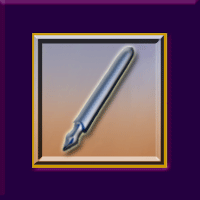 Are you an effective teller of tales?
Are you an effective teller of tales?
Professional or amateur, the most challenging part of a day of wordsmithing may be facing a blank piece of paper, or an empty page on your monitor’s screen…especially if you’re writing what feels like a dull narrative.
Writing Tips
THE ART AND SCIENCE OF WRITING
It may be surprising to you, but despite our electronic age, there are still writers who begin each project with hardcopy composition. If this authoring strategy produces effective prose, it’s hard to argue with their writing process. It’s all a question of the results that come from one’s practice of the art of communication. In both fiction and non-fiction, when the writer’s inspiration produces a rich palette of words that maximizes their reader’s experience, their methods have been successful!
Regardless of your wordsmithing process, on days when you feel lacking in creativity and even editorial direction, I suggest you begin by capturing the images that first come to your mind as you contemplate the scope and goals of your project. Work without concern for the structure of language, correct grammar, or the sequence in which the words emerge. Within a short while, you should find yourself producing an unstoppable stream of verbiage.
As your pace slows, you can pause to write a brief outline of your work to that point. Confident that you will not lose direction, glance over your creative output for patterns within the images, dialogue, and activity that you have produced. You can then begin empowering your words by strengthening the connectivity of fragmented text.
You should then be able to move back and forth between the creative and editorial processes fairly easily. I stress the first category—creativity—because writers often lose images they have glimpsed by becoming too absorbed in initial self-editing. Remember, editing can always be accomplished at a future time. But if you lose your inspired thoughts, they may never be retrieved…or built upon as you initially envisioned.
Experienced authors often have an established writer’s voice on which they can draw. This is true whether they are writing the fourth book in a series, or constructing a non-fiction piece reflecting their true voice and personality. Whether you are in this position, or creating a wholly new voice, you may wish to take a few moments and reflect on the tone, sophistication of vocabulary, structure of language that is most appropriate to the current work, and images that will enhance the sensory experience of your audience. [Please note that I am referring to your voice as the teller of facts or a story, not the voices of any characters you may be creating.]
With these elements in mind, you can enter the realm of refining the vocabulary and organization of your piece. As usual, I suggest you begin with the most obvious edits. Personally, I have a tendency to employ overly complex sentence structure that begs immediate trimming. Another pattern that many of us face is the need to flip first and last clauses, sentences, and even paragraphs. Like everything else, practice makes better, if not perfect, form. By the time you’ve reached the end of a couple of sections, your structure should have tightened with increasing clarity.
Writer’s Guidelines
MY EDITORIAL PROCESS
Sometimes in the midst of mundane edits, I have a sense of the truly impactful changes I wish to make. If working in hardcopy (often late at night in the midst of classic films or predictable episodes of television mystery shows), I’ll make marginal notes regarding a character’s appearance, vocabulary, motivations, or inner thoughts regarding other characters. [This has proven especially important when working on books subsequent to Prospect for Murder in the continuing Natalie Seachrist Hawaiian Mystery series.] And when at the computer, I may utilize small sticky notes to record my ideas.
With obvious adjustments to structure complete, I move within the piece to maximize its overall flow and tone. I usually begin by modifying nouns and adjectives. In a previous blog on color theory [see Design Dilemmas for Authors, Part 3: Color, May 30, 2015], I discussed various words that might be used in place of the word blue to enhance your color palette.
FACILITATING COMMUNICATION
Likewise, consider how you might embellish a scene referring to a red sofa. While inappropriate for a children’s picture book (and most contemporary fiction), the author of a dramatic historical novel might say, “The heroine entered the study nervously and perched on the garnet colored velvet chaise lounge.” Here I wish the reader to feel wooed by the distinctive color, texture and shape of a piece of furniture.
In my own writing, I frequently draw on the breadth of my writer’s palette to concisely depict the ambiance of a scene. For example, “She heard the sharp sound of a gunshot” became “She was startled by the sharp report of a bullet slicing the air.” Here I turned a matter-of-fact incident report to a description of my character’s response, which allows the reader to join in the heroine’s frightening experience which will enable your reader to feel they are present at the scene…and who knows how that may prove useful if your piece were to be converted to a script for a movie or television show.
Impactful Advertising Messages
ALTERING PUNCTUATION
Consider the following examples of shifting vocabulary, word sequence, and punctuation that can alter a reader’s interpretation of a passage within commercial as well as fictional text:
~ Experience the unique luxury of a journey to the Orient aboard the majestic RMS Empress of Britain. [Advertising copy similar to posters for the ship’s 1932 world cruise]
~ I journeyed from Hong Kong to Honolulu aboard the RMS Empress of Britain. [A matter of fact statement appropriate for any type of writing]
~ Truly…I did enjoy my trip aboard the RMS Empress of Britain. [A plea to be believed; perhaps for the dénouement of a murder mystery]
~ I immensely enjoyed my sojourn from Hong Kong to Honolulu aboard the luxurious RMS Empress of Britain. [An elegant, almost fussy statement, appropriate to a romance novel]
There are many ways to strengthen your writer’s voice for each project you undertake. Reading other works in the same genre by authors you like and dislike will provide examples to emulate, as well as to reject in your own work. There are also reference materials that will broaden your ability to describe people and occurrences in an articulate manner appropriate to your genre. You might begin by perusing your own reference library to ensure you have: A couple of grammar-cramming style books such as The Chicago Manual of Style and the Associated Press Stylebook, which are standards. You will also want to have a thesaurus or two, and a few dictionaries, including ones for foreign words or phrases you might use.
A RICH PALETTE OF IMAGES
Beyond these basics, consider how you can use Internet search engines and other materials. One of the most interesting sources I’ve found is obituaries [see Shopping for Characters, May 12, 2015]. This is a great place to find physical descriptions of people, and to discover comprehensive biographic images and sometimes even the settings through which men and women of past generations walked.
Wishing you the best in your creative endeavors,
Jeanne Burrows-Johnson, author, consultant, and motivational speaker
Tips to enhancing your writing may be found in the following posts:
Empowering Your Words, February 2015
Creating Fictional Characters, March 2015
Sidestepping Writer’s Block, April 2015
Communicating with Every Sense, May 2015
Energizing Narrative Passages, September 2015
The Author Recycles, July 2017
Balancing Text & Space, February 2017
Book Series Adventures, April 2018
Drawing on Sense Memories, July 2018
To learn more about the award-winning Natalie Seachrist Hawaiian Mysteries, including Murders of Conveyance [Winner, Fiction Adventure-Drama, 2019 New Mexico-Arizona Book Awards] and other projects, please drop in at my author’s website JeanneBurrows-Johnson.com. You’ll even find Island Recipes that might inspire your culinary creativity.
For more ideas to strengthen your Wordpower© and branding, please visit: Imaginings Wordpower and Design Consultation.
Follow Me On:
Amazon, Arizona Authors Association, Apple Books,
Audible, Authors Den, Barnes and Noble, Blogarama, Book Bub,
Cozy Mysteries-Unlimited, Facebook, Good Reads, Hometown Reads
Book sellers may contact book distributors such as:
Baker & Taylor, Follett, IPG, Ingram, Mackin, Midpoint, TitleWave


